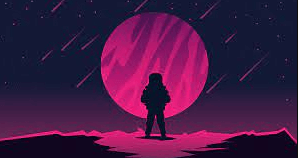The Fascinating World of NFT Art: Everything You Need to Know
Table of Contents
Introduction
In recent years, the art world has witnessed a revolutionary transformation with the advent of NFTs (Non-Fungible Tokens). NFT Art has taken center stage, captivating artists, collectors, and enthusiasts alike. This article delves into the concept of NFT Art, explores its significance, and answers frequently asked questions to provide you with a comprehensive understanding of this groundbreaking digital art form.
What is NFT Art?
NFT Art refers to digital artwork that is tokenized as a Non-Fungible Token on a blockchain network, most commonly on the Ethereum blockchain. Each NFT is unique, representing a specific piece of art, making it distinguishable from other tokens, hence the term “non-fungible.” This technology enables artists to verify the ownership, provenance, and scarcity of their creations in a secure and transparent manner.
The Rise of NFT Art
NFT Art has gained immense popularity due to its groundbreaking features. Artists can now sell their work directly to collectors without intermediaries, enabling them to retain more profits and gain exposure in the global art market. Additionally, NFT Art allows for digital scarcity, a concept that was previously challenging to achieve in the digital realm, making each piece more valuable and desirable.
Read also: https://newserelease.com/how-nfts-took-over-art-basel-miami-beach/
FAQs about NFT Art:
- How do NFTs work for art?
NFTs are created by uploading digital artworks onto a blockchain platform. The artwork is then tokenized, and a unique token is generated to represent that specific artwork. This token is stored on the blockchain, ensuring transparency, security, and immutability of ownership. Collectors can buy, sell, and trade NFT Art in various online marketplaces.
- What makes NFT Art valuable?
The value of NFT Art is derived from its scarcity, authenticity, and demand. Each NFT is one-of-a-kind, and the blockchain ensures its authenticity and ownership history. As collectors seek exclusive and unique digital artworks, the demand for NFT Art has surged, leading to higher values and potential returns on investments.
- Are there copyright concerns with NFT Art?
Copyright concerns surrounding NFT Art are a valid consideration. While NFTs prove ownership of the digital artwork, they don’t inherently grant copyright ownership. Artists must ensure they hold the copyright or have the rights to sell the artwork as an NFT to avoid legal complications.
- Which platforms support NFT Art?
Various blockchain platforms support NFT Art, with Ethereum being the most popular one. Ethereum’s ERC-721 and ERC-1155 standards facilitate the creation and trading of NFTs. Other blockchain networks, such as Binance Smart Chain and Flow, also support NFTs and have their own NFT marketplaces.
- Can I create and sell my NFT Art?
Absolutely! Artists from all backgrounds can create and sell their NFT Art. Platforms like OpenSea, Rarible, and Foundation allow artists to mint their artwork into NFTs and list them for sale. However, competition is fierce, so building a strong online presence and engaging with the NFT community can enhance visibility and sales.
Conclusion
NFT Art has revolutionized the art world, providing artists with unprecedented opportunities to showcase their creativity and connect with a global audience. The allure of digital scarcity, ownership transparency, and potential value appreciation has led to an explosion in NFT Art’s popularity. As this exciting digital art form continues to evolve, artists and collectors can look forward to a vibrant and dynamic creative landscape in the NFT space.





